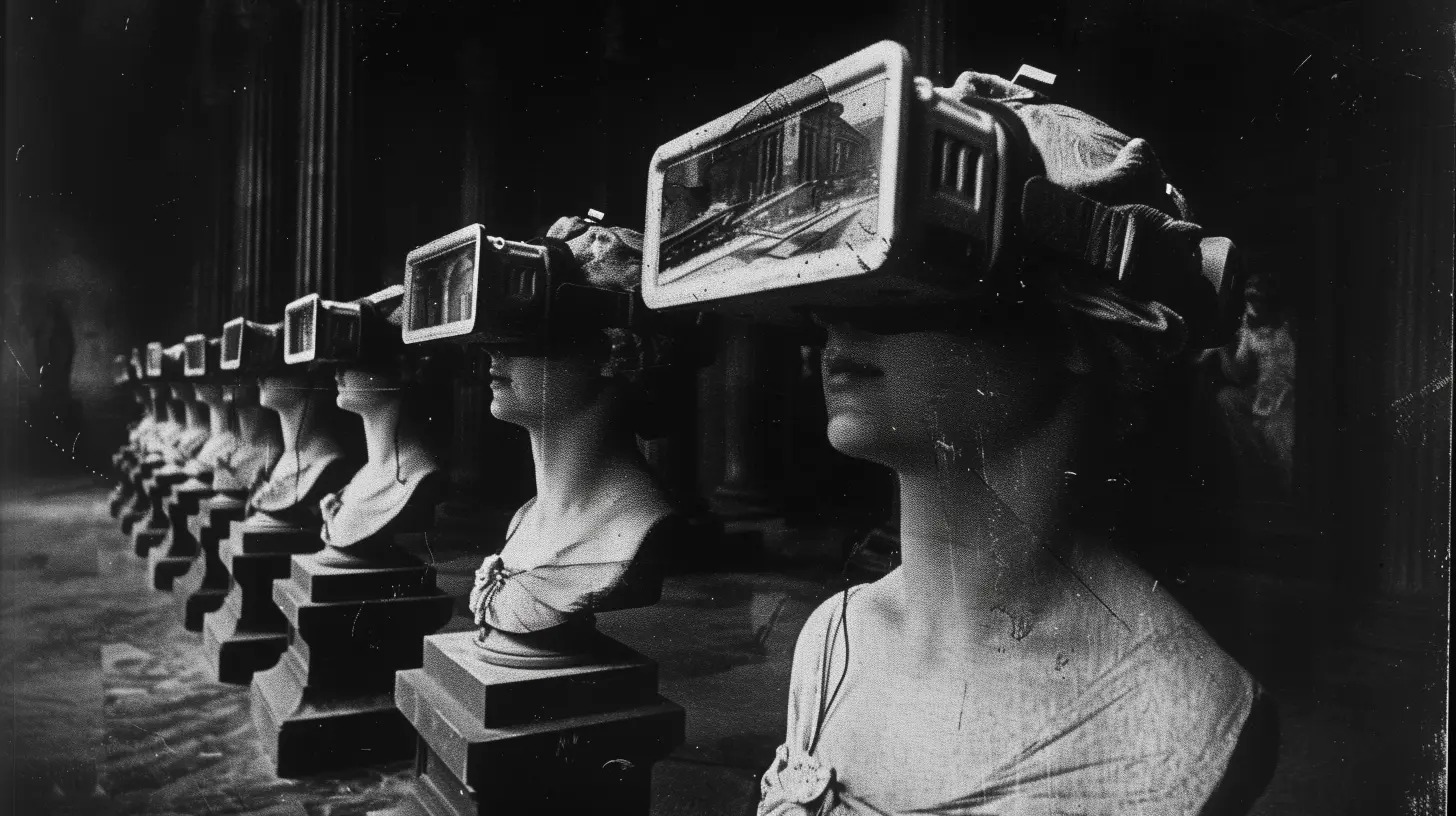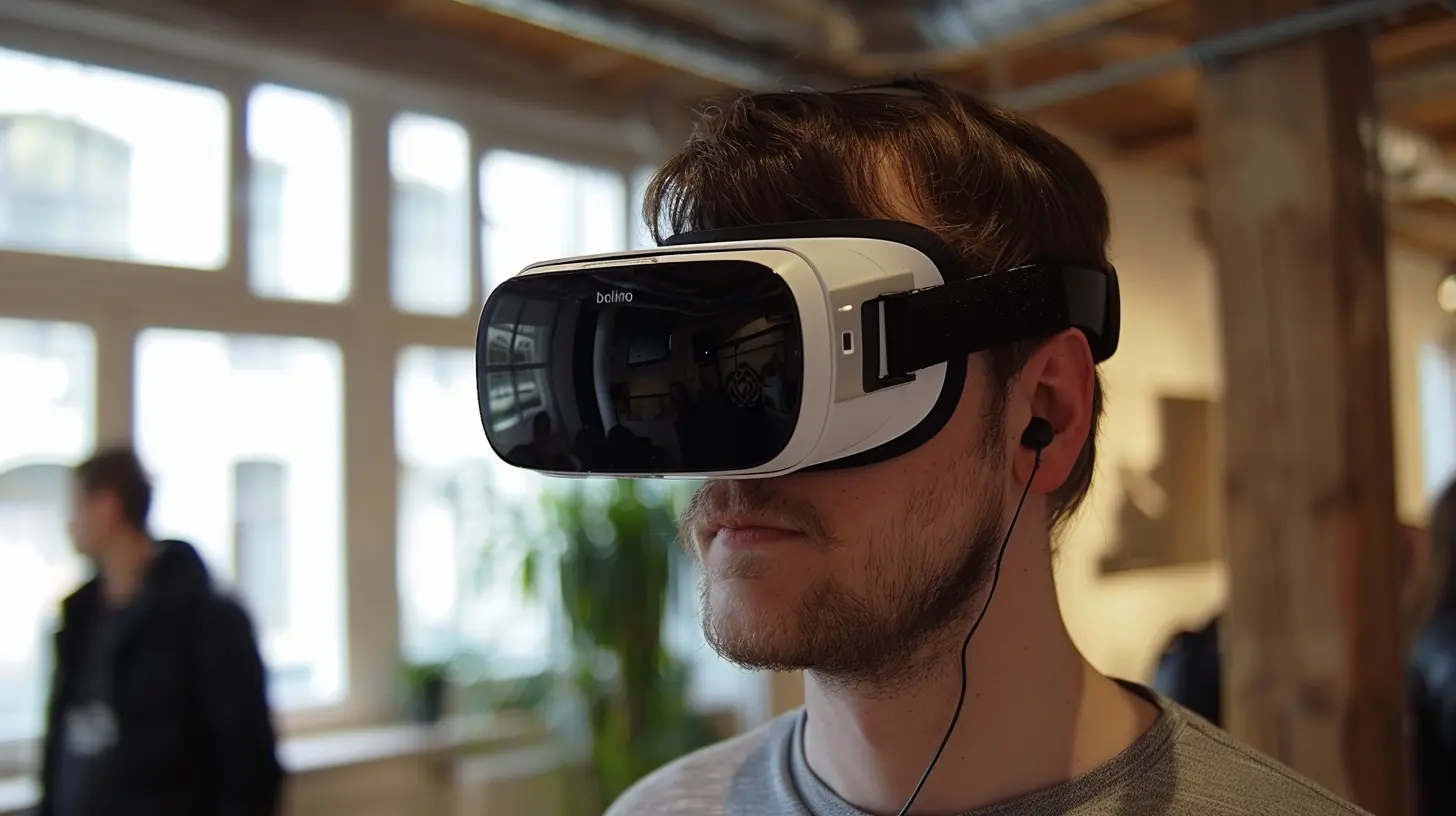The Role of Virtual Reality in Modern Digital Transformations
20 November 2025
Let’s be honest—digital transformation has become one of those buzzwords that every business throws around. But when you dig deeper, it’s not just about upgrading software or shifting to the cloud. It’s about a total evolution of how we interact with technology, people, and data. And guess who's stepping into the spotlight as one of the most powerful drivers behind this change? Yep, Virtual Reality (VR).
Virtual Reality isn’t just for gamers or sci-fi movies anymore. It’s shaking up industries, reinventing customer experiences, and bringing entirely new ways to work, learn, and communicate. So, buckle up, because we’re diving into how VR is playing a massive role in reshaping the digital world around us.
What Is Virtual Reality (VR) Anyway?
Before we get into the meat of things, let’s clear the air. What exactly is Virtual Reality?In simple terms, VR is a simulated experience that you can interact with, using devices like VR headsets, gloves, and even motion trackers. Unlike augmented reality (AR), which overlays digital images on the real world, VR pulls you into a completely digital environment—like stepping into a new dimension.
Think of it like teleporting. One moment you're sitting on your couch, and the next, you're walking through a virtual car showroom, attending a virtual business meeting, or even training for a medical procedure. No passport required.
Why Virtual Reality Is a Game-Changer for Digital Transformation
Digital transformation isn’t just about throwing tech at problems. It’s about rethinking the way businesses and people operate. That’s where VR comes in.Here’s how:
- Immersive Experiences: VR allows you to interact with technology as if it's right in front of you. That leads to richer engagement, better understanding, and stronger emotional connections.
- No Physical Barriers: From virtual meetings to remote training, VR obliterates geographical restrictions.
- Faster Learning and Better Retention: VR-based training programs help people learn faster and remember more. Why? Because they’re doing rather than just reading or watching.
Industries Being Transformed by VR
1. Healthcare
Imagine a surgeon practicing a tough operation in a risk-free environment, or a therapist helping veterans cope with PTSD using immersive exposure therapy. That’s not futuristic fluff—it’s happening now.- Surgical Training: VR helps doctors simulate surgeries before touching a real patient.
- Mental Health Therapy: VR sessions can treat anxiety, phobias, and PTSD.
- Patient Education: Patients can now visualize what’s happening inside their bodies, making complicated medical info easier to digest.
2. Education and Training
Traditional classroom settings are evolving fast. Thanks to VR, students can now walk through historical cities, dive under the ocean, or even explore the solar system—without ever leaving their desks.- Virtual Classrooms: Especially during the pandemic, VR-enabled learning kept the experience interactive.
- Corporate Training: From onboarding to safety drills, companies use VR to create hands-on learning experiences.
- Soft Skill Development: Leadership, empathy, communication—it’s all being taught in immersive digital scenarios.
3. Retail & E-commerce
Ever hesitated to buy furniture online because you weren’t sure how it would look in your room? VR fixes that.- Virtual Try-Ons: You can “wear” clothes or accessories without leaving your home.
- VR Showrooms: Retailers create virtual stores for customers to explore and shop.
- Personalized Shopping Experiences: AI meets VR for tailored product recommendations in interactive environments.
4. Real Estate
Gone are the days of flipping through photos of properties. VR tours let you walk through homes and commercial spaces anytime, anywhere.- 3D Virtual Tours: Buyers and renters can explore properties 24/7.
- Architectural Visualization: Architects use VR to show clients what unbuilt designs will actually look like.
- Remote Collaboration: Designers and clients can tweak layouts together in real-time—even from other continents.
5. Manufacturing and Engineering
VR is helping engineers and designers test products long before they’re built, saving time, money, and materials.- Virtual Prototyping: Build, test, and improve products all in a digital environment.
- Maintenance Training: Workers can practice complicated repair tasks virtually before doing the real thing.
- Plant Layouts: Simulate and optimize factory floor plans before making physical changes.
The Role of VR in Customer Experience (CX)
Let’s face it—today’s customers are spoiled. They expect fast, personalized, and interactive experiences, and VR helps businesses deliver just that.- Interactive Demos: Show off products and services in a way that people can actively engage with.
- Emotional Engagement: Immersive VR experiences can build stronger emotional connections with brands.
- Customer Support: Imagine chatting with a virtual assistant that’s not just a chatbot but an avatar in a VR environment.
Remote Collaboration and the Future of Work
With hybrid and remote work becoming the new normal, VR is reimagining how teams connect and collaborate.- Virtual Offices: Think Zoom but with avatars in 3D meeting rooms. It makes everything feel more “in the room.”
- Project Collaboration: Designers, marketers, engineers—everyone can work on the same digital object in real-time.
- Teambuilding Activities: Forget trust falls. VR games and challenges provide fun ways to build camaraderie in remote teams.
Marketing and Advertising in VR
Attention is the most valuable currency online—and VR offers marketers a flashy and immersive way to capture it.- Branded Experiences: Create interactive events or games featuring your brand.
- Product Launches: Host memorable virtual unveilings with global audiences.
- 360-Degree Ads: Instead of flat, static banners, let users explore an ad like it’s a mini-world.
VR + AI + IoT: A Digital Dream Team
On their own, VR, Artificial Intelligence (AI), and the Internet of Things (IoT) are powerful. But when you combine them? It’s like giving superpowers to your digital transformation strategy.- Smart Environments: Imagine a smart home you can walk through in virtual reality before it’s even built.
- Predictive Experiences: AI can personalize virtual experiences based on your behavior.
- Data-Driven Insight: IoT + VR provides real-time data from physical devices in a virtual environment.
Challenges of Implementing VR in Digital Transformation
Of course, no tech is without its growing pains. Here are a few bumps in the road:- Hardware Costs: Good VR equipment isn’t cheap (yet).
- Tech Learning Curve: Not everyone is comfortable with VR right away.
- Content Creation: High-quality VR content takes time and money to produce.
- Motion Sickness and Accessibility: Not everyone can use VR comfortably—considerations for inclusivity are essential.
The Future of VR in Digital Transformation
We're just scratching the surface of what’s possible.- 5G Will Supercharge VR: Lower latency and higher speeds mean smoother, more responsive experiences.
- Mainstream Adoption: As costs go down and tech improves, even small businesses will jump on board.
- Metaverse Integration: Whether you love or hate the buzzword, a unified virtual ecosystem is coming, and VR is its gateway.
Picture this: In 10 years, your Monday morning could start inside a virtual office, attending a team meeting while sipping real coffee, surrounded by digital post-its, charts, and interactive to-do lists. Wild, right?
Final Thoughts
Virtual Reality isn’t just a gadget or another passing trend—it’s an engine driving modern digital transformations. It’s changing how we work, learn, create, and connect. Whether you’re a business owner, a developer, or just a curious techie, tapping into VR can offer more immersive, engaging, and efficient ways to solve problems and seize opportunities.The future isn't just digital—it’s immersive. And VR is leading the charge.
all images in this post were generated using AI tools
Category:
Digital TransformationAuthor:

Reese McQuillan

